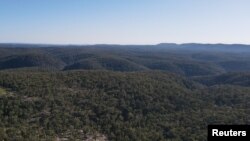The island state of Tasmania in Australia has become one of the first parts of the world to become not just carbon neutral but carbon negative by reducing logging, according to new research.
The research has traced back the start of a fall in greenhouse gas emissions in Tasmania to around 2011.
The study by the Australian National University and Griffith University in Queensland found the downturn was the result of a “significant drop in native forest logging.”
It helped turn the island state that sits off the southern coast of the Australian mainland from a net emitter of carbon to a negative emitter.
The researchers believe it is “one of the first times on the planet that anybody has ever done this kind of [carbon emission] reversal.”
“It was a dramatic turn-around. There was basically a mitigation benefit of about 22 million tons of CO2 [Carbon dioxide] equivalent per year," says lead author professor Brendan Mackey from Griffith University. "The state of Tasmania had become carbon negative. It is the result of a major change in forest management. For a number of reasons, there was a large and rapid drop in native forest logging. The other thing that is important to note about Tasmania and another reason why they could be carbon negative is that they do not use much fossil fuel and that is because they have a lot of hydroelectricity.”
The study asserts that Tasmania’s change in forest management could be applied elsewhere in Australia and in other parts of the world.
It states that “tree farms” or plantations would help to satisfy the demand for timber, without increasing emissions associated with larger-scale logging of native forests.
Only small sections of native woodlands in Tasmania are logged each year, and industry representatives have said that sustainable practices ensure “that every single tree that is harvested is replanted or regenerated for the future.”
The Australian university paper reports that a significant source of greenhouse gas emissions was from deforestation and degradation due to the exploitation of native forests.
In the Australian state of Victoria, the government has acknowledged that native forest logging generated emissions that were equivalent to those from 730,000 motor vehicles every year.








